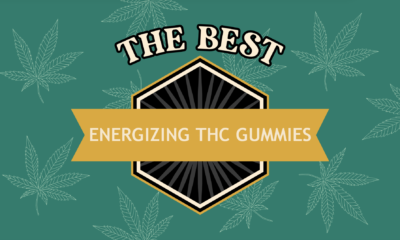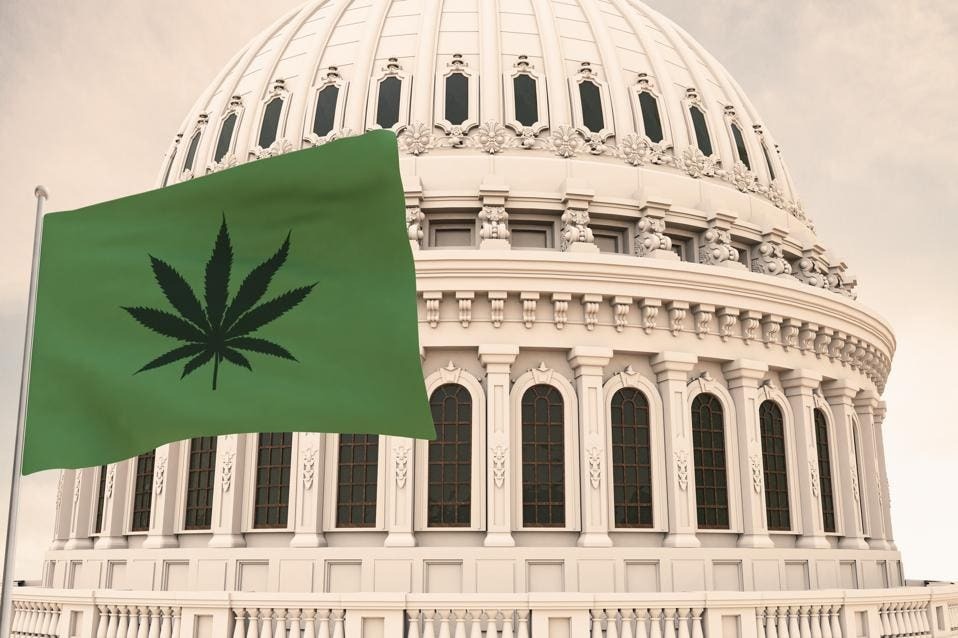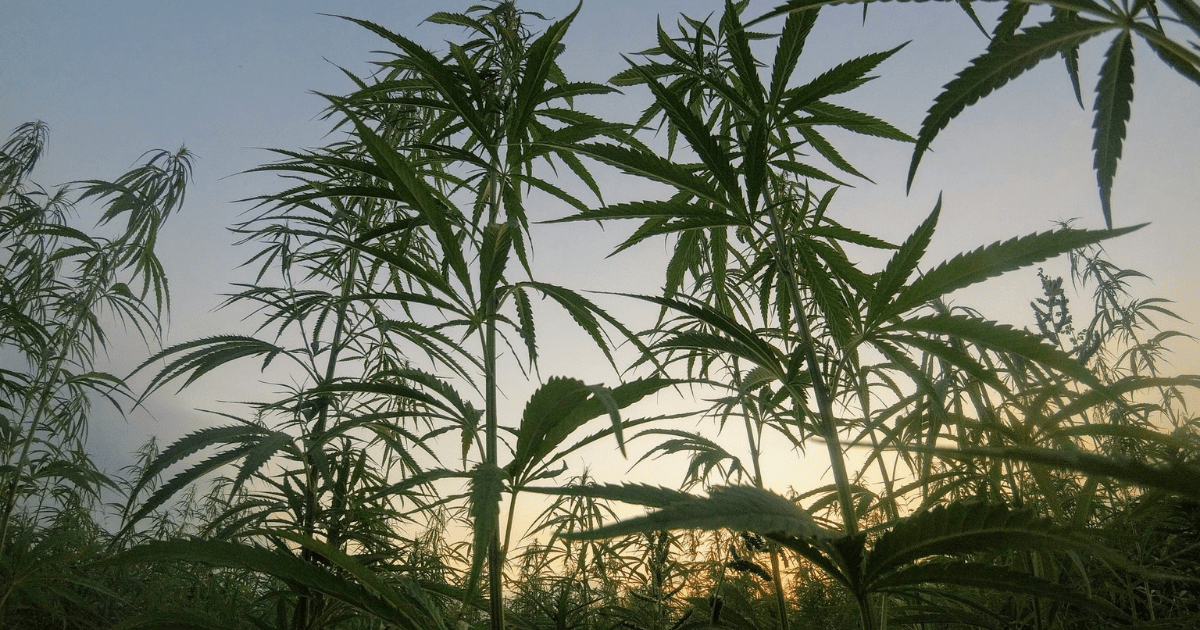An economic winter is coming, but don’t worry; we’ve compiled ten ways cannabis can revive a depressed economy.
When many people hear “cannabis,” they may think of it as a recreational activity or a medical necessity. And it is. But it’s more than that.
So while politicians will inevitably announce “stimulus” and bailouts, the real solution will come from entrepreneurs in a free market.
And since Canada has already legalized cannabis, that’s one hurdle out of the way. Next, cut all the regulations that prevent cannabis from reviving a depressed economy.
Difference Between Hemp and Cannabis
First, let’s briefly discuss the difference between hemp and cannabis.
Centuries of selective breeding have split the cannabis sativa genus into two identifiable crops: consumable cannabis and industrial hemp.
Hemp may be the most sustainable crop on the planet. It is one of the fastest-growing, requires little water, and no pesticides.
It also returns nutrients to the topsoil. Topsoil erosion is a huge problem that, if not dealt with, will result in the starvation of billions before the end of the century.
Ten Ways Cannabis Can Revive a Depressed Economy
#10 – Hemp Biofuels
We’ve covered this topic before. Naysayers “debunk” this idea based on current hemp strains. But this would be like calculating Canada’s current grain production using wheat stains from the 19th century. You’d conclude that we don’t have enough land to feed ourselves, let alone export.
Likewise, current hemp strains aren’t ideal for biodiesels, but that doesn’t make the idea unworkable. Hemp can create biofuels that power cars and other goods. Transitioning to hemp reduces dependence on Saudi oil and restores Canada’s energy security.
And, of course, creating biofuels creates jobs.
#9 – Industrial Hemp
Speaking of hemp, we can use it to produce various industrial products. In fact, hemp was once the preferred choice for several consumer products. Consider the jobs created in manufacturing and construction by making hemp paper, textiles and building materials.
Entrepreneurs can produce hempcrete, a sustainable building material made from hemp, lime, and water. It is durable, fire-resistant, and energy-efficient. We can use hempcrete in construction projects, creating job opportunities in the construction industry.
#8 – Clothing Industry
Right now, a lot of our clothes are cotton-based. Cotton requires pesticides that build up in the soil and contaminate drinking water. Plus, Canada can’t grow cotton. We rely on the United States.
A hemp-based clothing industry not only creates manufacturing jobs but also supports retail.
#7 – Hemp Plastics
Entrepreneurs can use hemp to create biodegradable plastics. A cannabis-hemp plastics industry creates jobs and helps revive a depressed economy, and it’s environmentally sustainable.
#6 – Food
Cannabis not only helps revive a depressed economy, but it can also relieve food shortages. From protein bars to milk, the growth of the hemp food industry creates jobs in farming and manufacturing, processing plants, and retail.
Ten Ways Cannabis Can Revive a Depressed Economy
#5 – Cannabis Tourism
Tourism is one of the first sectors to notice when people are strapped for cash. However, people don’t stop wanting time off from work. And in a depressed global economy, cannabis tourism may be one of the more affordable options.
That’s why Canada is shooting itself in the foot with these “public health” approaches to legalization. We’ve entirely rejected the idea of cannabis tourism. There are little-to-no consumption lounges, cannabis-centric hotels, or cannabis-infused restaurants.
Gutting the “public health” approach to cannabis legalization and liberalizing the laws will help revive an already depressed cannabis tourist economy.
#4 – Beauty Products
What sector survives, even thrives, during economic recessions? Beauty products. You can come up with all sorts of reasons why that may be, but the fact is, the Lipstick Index shows how many women consider beauty products just as essential as food and housing.
Entrepreneurs already incorporate hemp oil into beauty products like lotions and shampoos. Growing this industry creates jobs in manufacturing, retail, and marketing.
Ten Ways Cannabis Can Revive a Depressed Economy
#3 – Research and development
With cannabis reviving a depressed economy, you can make money in research and development. Cannabis and hemp research can lead to new discoveries and innovations in medicine, agriculture, and manufacturing.
Create a hemp strain that can survive Canada’s harsh conditions on the prairies, and you could make millions.
#2 – Banking
Cannabis banking remains elusive even in Canada, where it’s legal. The rationale is that Canadian banks are too exposed to the American market and don’t want to piss off D.C.
But considering that this global depression will result from fraudulent banking practices, perhaps the most critical way cannabis can revive a depressed economy is by taking over the money itself.
Cannabis as money? It’s not as far-fetched as it sounds. Money originated as a commodity people liked to have. People like owning gold, but it also works as an effective medium of exchange.
Likewise, people like consuming cannabis, but like cigarettes in prison, grams of cannabis have exchange values that make for effective money.
Cannabis hashcoin to revive a depressed economy? Stranger things have happened…
Ten Ways Cannabis Can Revive a Depressed Economy
#1 – Agriculture
Of course, the #1 way cannabis can revive a depressed economy is through agriculture. Canada is one of the largest agricultural producers and exporters in the world. We should use hemp as a rotational crop to improve soil health and prevent erosion.
As per the 2016 census, there are 193,492 farms in Canada. The average Canadian farm is about 800 acres. To revive a depressed economy, we ease the agricultural sector’s burden by reducing these farms’ taxes and regulations.
Even communist Cuba realizes when shit hits the fan, you need a free market in agriculture. Canadians can support their farmers and future farmers by reducing financial burdens and incentivizing hemp and cannabis production.
Ten Ways Cannabis Can Revive a Depressed Economy
These aren’t the only ways cannabis can revive a depressed economy. And obviously, none of these proposals will work if the Canadian government continues to excessively tax income, capital gains, sales, hotels, employment, carbon, airports, natural resources, businesses, tolls, car tires, guns, fuels, schools, cannabis, alcohol, payroll, customs, and imports.
Once upon a time, Canadians knew they couldn’t compete with the U.S. economy. So our politicians focused on ensuring our business environment was friendly. That our taxes were lower.
As the 1940 Royal Commission reported, “British North American governments did not concern themselves with the daily regulation of the daily pursuits of the people… They took seriously their responsibilities for defence and maintaining internal order but they carried them out with frugal care.”
We’ve clearly lost this Canadian tradition. For cannabis to revive a depressed economy, we’ll have to revive this idea too.


 Cannabis News2 years ago
Cannabis News2 years ago
 One-Hit Wonders2 years ago
One-Hit Wonders2 years ago
 Cannabis 1012 years ago
Cannabis 1012 years ago
 drug testing1 year ago
drug testing1 year ago
 Education2 years ago
Education2 years ago
 Cannabis2 years ago
Cannabis2 years ago
 Marijuana Business Daily2 years ago
Marijuana Business Daily2 years ago
 California2 years ago
California2 years ago

































